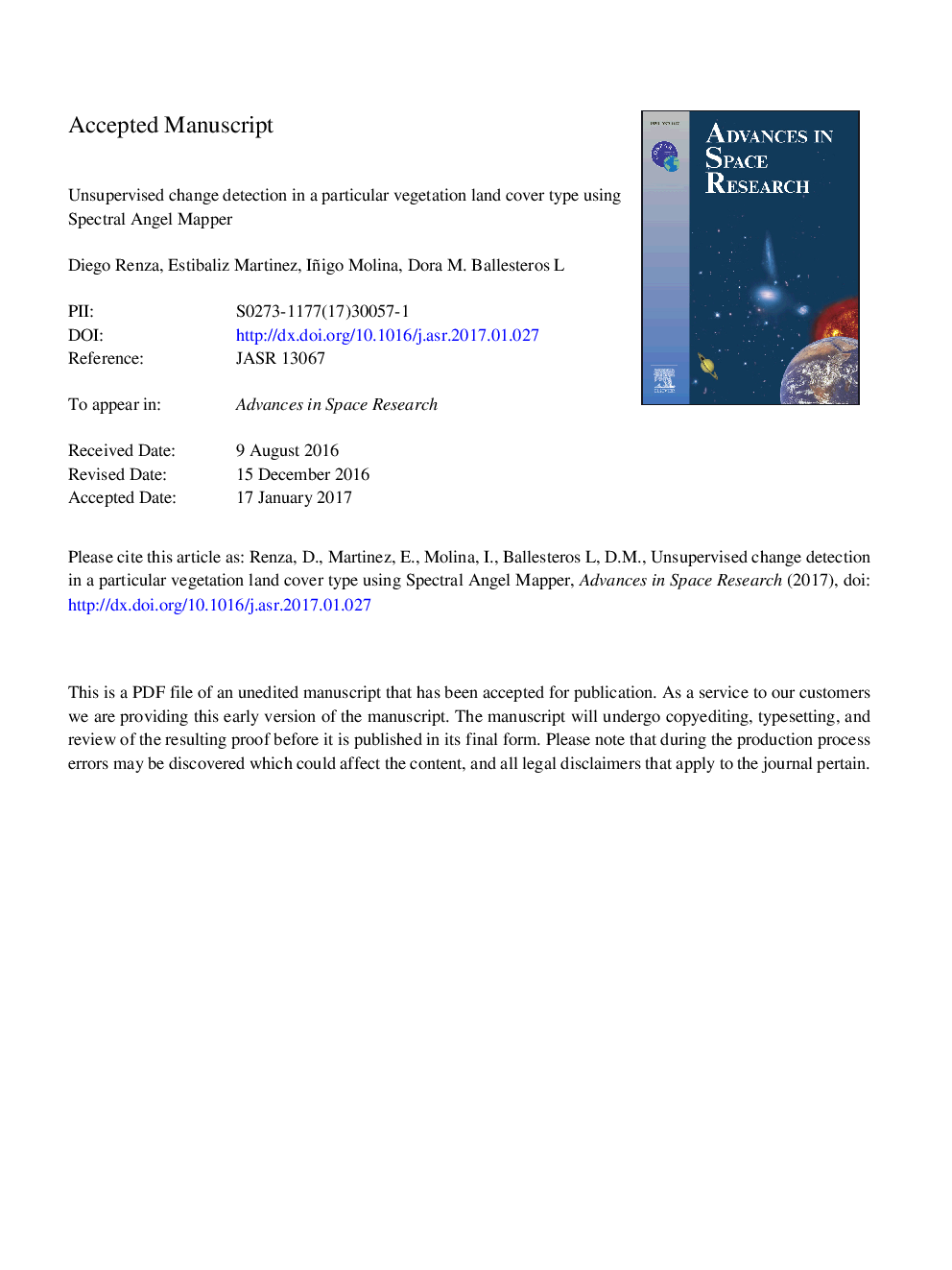| Article ID | Journal | Published Year | Pages | File Type |
|---|---|---|---|---|
| 5486673 | Advances in Space Research | 2019 | 27 Pages |
Abstract
This paper presents a new unsupervised change detection methodology for multispectral images applied to specific land covers. The proposed method involves comparing each image against a reference spectrum, where the reference spectrum is obtained from the spectral signature of the type of coverage you want to detect. In this case the method has been tested using multispectral images (SPOT5) of the community of Madrid (Spain), and multispectral images (Quickbird) of an area over Indonesia that was impacted by the December 26, 2004 tsunami; here, the tests have focused on the detection of changes in vegetation. The image comparison is obtained by applying Spectral Angle Mapper between the reference spectrum and each multitemporal image. Then, a threshold to produce a single image of change is applied, which corresponds to the vegetation zones. The results for each multitemporal image are combined through an exclusive or (XOR) operation that selects vegetation zones that have changed over time. Finally, the derived results were compared against a supervised method based on classification with the Support Vector Machine. Furthermore, the NDVI-differencing and the Spectral Angle Mapper techniques were selected as unsupervised methods for comparison purposes. The main novelty of the method consists in the detection of changes in a specific land cover type (vegetation), therefore, for comparison purposes, the best scenario is to compare it with methods that aim to detect changes in a specific land cover type (vegetation). This is the main reason to select NDVI-based method and the post-classification method (SVM implemented in a standard software tool). To evaluate the improvements using a reference spectrum vector, the results are compared with the basic-SAM method. In SPOT5 image, the overall accuracy was 99.36% and the κ index was 90.11%; in Quickbird image, the overall accuracy was 97.5% and the κ index was 82.16%. Finally, the precision results of the method are comparable to those of a supervised method, supported by low detection of false positives and false negatives, along with a high overall accuracy and a high kappa index. On the other hand, the execution times were comparable to those of unsupervised methods of low computational load.
Related Topics
Physical Sciences and Engineering
Earth and Planetary Sciences
Space and Planetary Science
Authors
Diego Renza, Estibaliz Martinez, Iñigo Molina, Dora M. Ballesteros L.,
